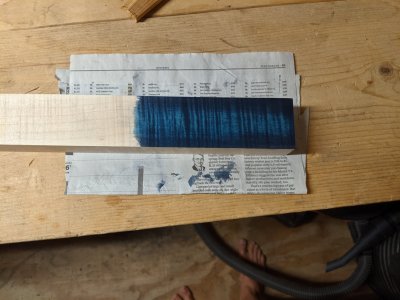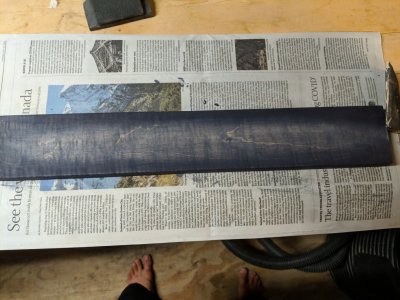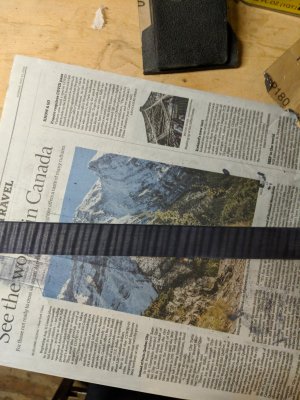Toolmaster Of Brainerd
Newbie
- Messages
- 14
I'm trying to dye flame maple and I'm not getting the classic flame effect that I'm aiming for.
I'm using Keda dyes. I sanded the wood to 150 grit, per the Keda dye instructions. I've mixed a black dye (more like a deep purple because I polluted it with a little blue) and a blue dye. My process is to apply 2 coats of black dye, sand back a burst shape, then apply blue dye. I want blue with black stripes fading into black.
My test piece turned out fantastic. I am now trying to do it on the real piece, but the curl and the rest of the wood are absorbing the dye equally. When I sand back the dye is fading from the wood uniformly, rather than staying in the curl.
The sides of the piece are absorbing the dye exactly as expected. But the front is not.
The test piece currently has 1 layer of shellac on it to make it look less dull.
I'll attach more photos in a minute
I'm using Keda dyes. I sanded the wood to 150 grit, per the Keda dye instructions. I've mixed a black dye (more like a deep purple because I polluted it with a little blue) and a blue dye. My process is to apply 2 coats of black dye, sand back a burst shape, then apply blue dye. I want blue with black stripes fading into black.
My test piece turned out fantastic. I am now trying to do it on the real piece, but the curl and the rest of the wood are absorbing the dye equally. When I sand back the dye is fading from the wood uniformly, rather than staying in the curl.
The sides of the piece are absorbing the dye exactly as expected. But the front is not.
The test piece currently has 1 layer of shellac on it to make it look less dull.
I'll attach more photos in a minute





